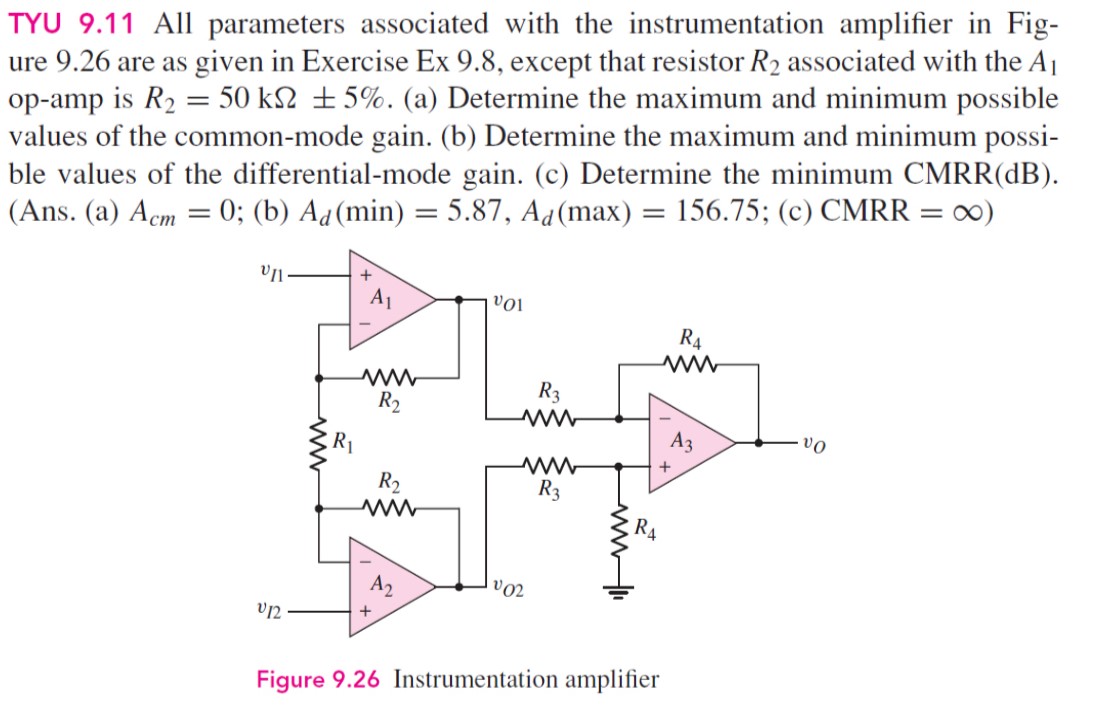TYU 9.11 All parameters associated with the instrumentation amplifier in Fig-ure 9.26 are as given in Exercise Ex 9.8, except that resistor R2 associated with the A1 op-amp is R2 = 50 kΩ±5%. (a) Determine the maximum and minimum possible values of the common-mode gain. (b) Determine the maximum and minimum possible values of the differential-mode gain. (c) Determine the minimum CMRR(dB). (Ans. (a) Acm = 0; (b) Ad(min) = 5.87, Ad(max) = 156.75; (c) CMRR = ∞) Figure 9.26 Instrumentation amplifier
